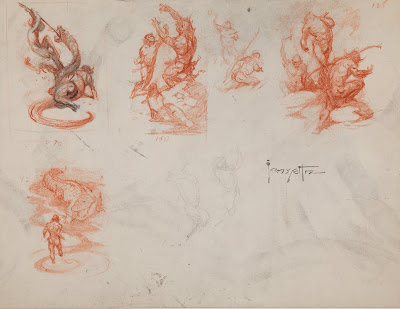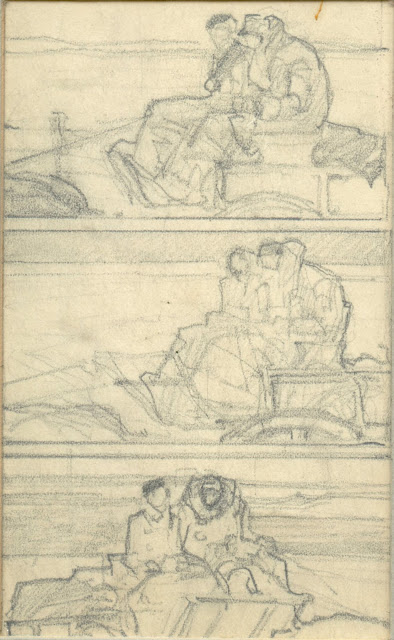The thumbnail preliminary sketch is where artists first attempt to capture a spark of inspiration.
Before the layers of refinement have been added, before the details and finishing touches, before the mistakes have been corrected, a concept takes its initial raw form in a thumbnail. Sometimes it's fun and educational to look at pictures in their embryonic state.
Different artists use thumbnails for different purposes. Some seek out the basic poetry of a picture:
 |
| Saul Tepper thumbnail |
 |
| John Singer Sargent's thumbnail for his portrait of the Wyndham sisters |
 |
| Harry Beckhoff |
 |
| Frank Frazetta's tiny sketches for his Canaveral series contained all the DNA for his finished pictures. |
Thumbnails can be dense with questions, bad instincts, alternative choices. The artist can afford to be fast and loose because thumbnails require less commitment than any other kinds of picture. They are the most promiscuous form of art, with all the attendant advantages and disadvantages.
Illustrator Robert Fawcett drew six tiny thumbnails on a single card:
Next we see illustrator Dan Content experiment with alternatives for an illustration of a couple in a carriage...
Thumbnails by the classic illustrators often demonstrate a strong sense of priorities and a sharp eye for key details such as the shape of the vase on the table. But the key strength of thumbnails is that they always imply so much more than they show. In many completed pictures the original concept is diminished.
More from Saul Tepper:
Thumbnails are tiny but inch for inch they can be more revealing than the finished picture. Good things can come in small packages.



































